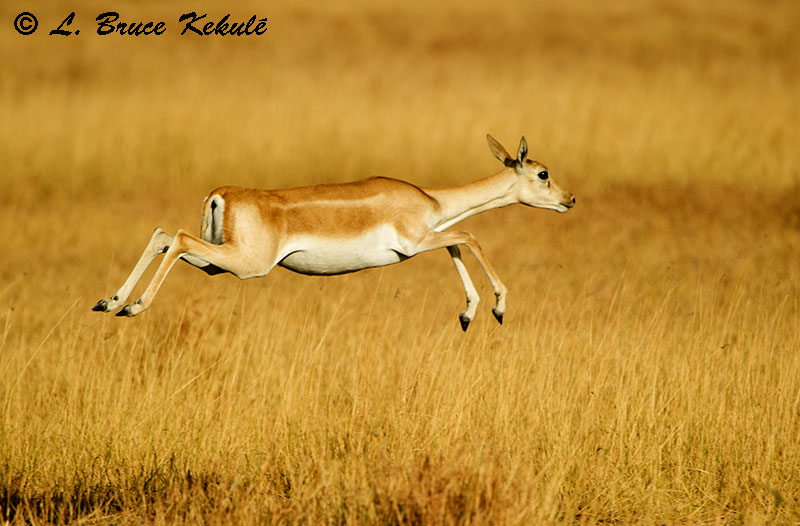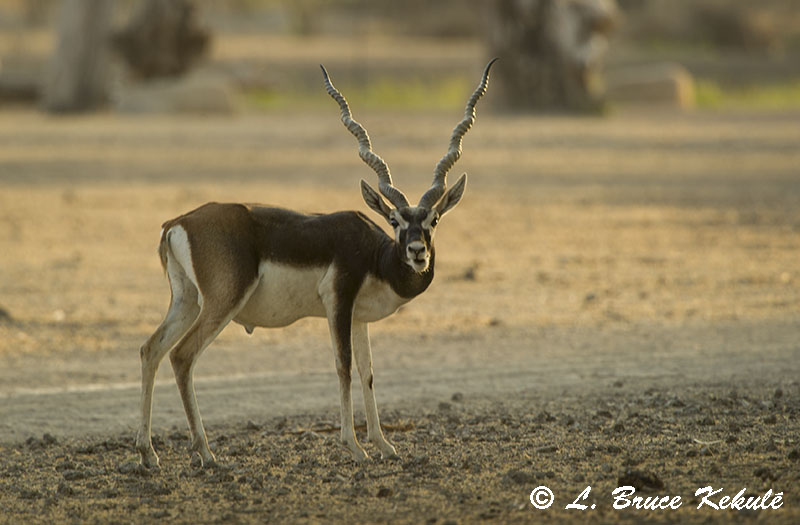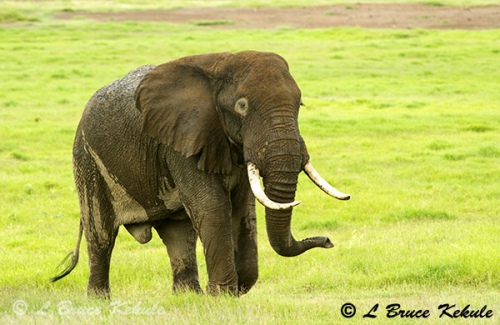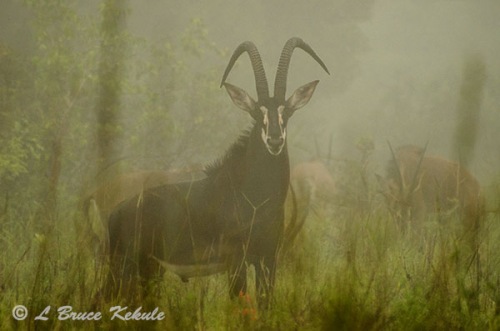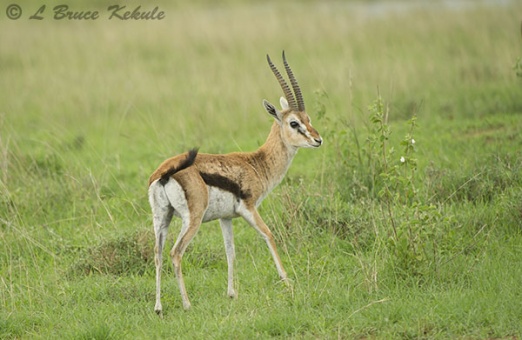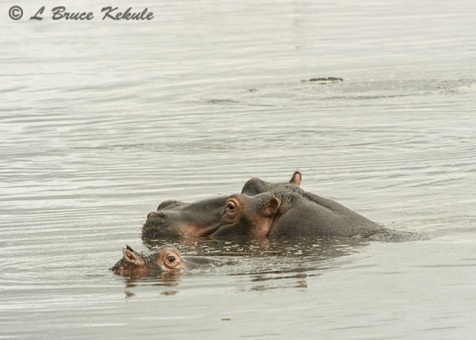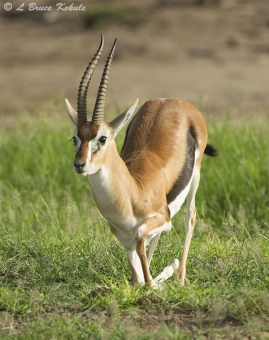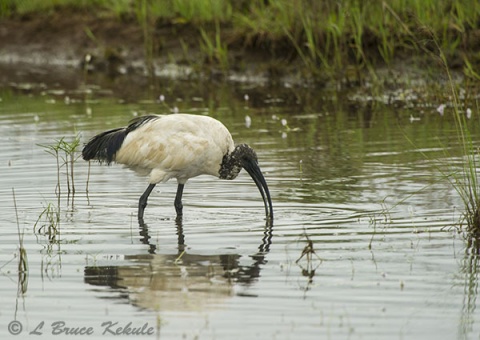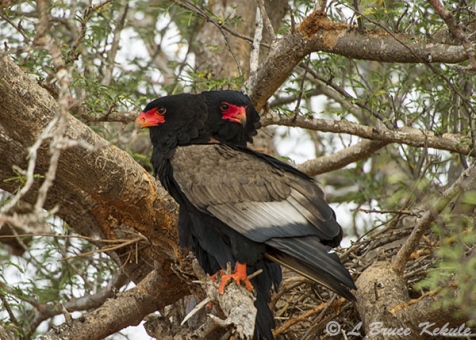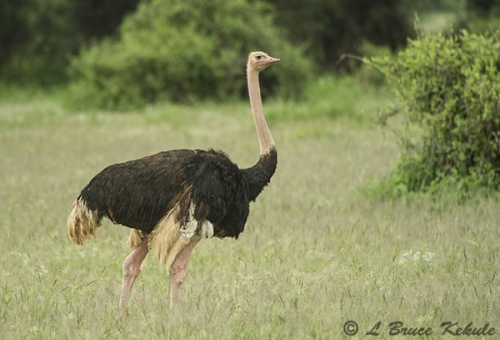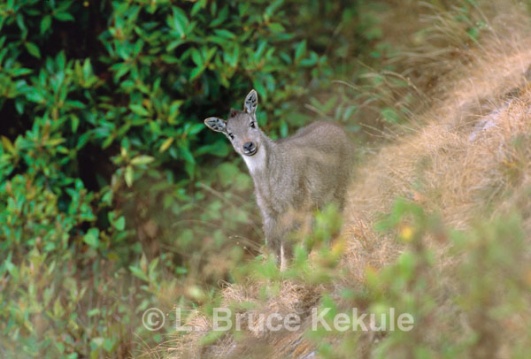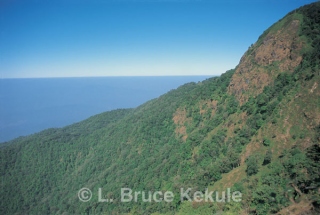Posts Tagged ‘antelope’
Land of the Flying Antelope…!
Beautiful herbivores with spiraled horns endemic to the Indian subcontinent…!
Blackbuck National Park – Velavadar
A young male blackbuck in mid-air over the grasslands at the Blackbuck National Park in Velavadar, Gujarat State, western India…!
A dream ever since I saw my first pictures of an Indian blackbuck antelope was to photograph these magnificent creatures one day. It has taken me 20 years since I saw them in a book titled ‘Wild India’ by English photographer Gerald Cubitt published in 1985. This was actually my first book on wildlife photography where I got an inspiration to become a wildlife photographer.
A mature male blackbuck seeking a female in heat early the first morning of my safari…!
I have seen many photographs of blackbuck since then in many other books on India, and on Facebook. I decided that a trip to the blackbuck sanctuary in Gujarat, western India this time around would be part of my month-long safari through March and April, 2016.
A female blackbuck in mid-air on the second morning while on safari in Velavadar…!
I left Delhi by plane and arrived in the city Ahmedabad for an overnight stay at a nice hotel in the city. The next morning after breakfast, my taxi from the night before picked me up and we headed out.
Female blackbuck antelopes in the air after crossing the road in front of our jeep…!
The drive took about 4 hours to the Blackbuck National Park in Velavadar, and I saw the herbivores crossing the road as we entered the national park. I knew then that I was in the right place.
Blackbuck males and females in the grasslands…this herd was several hundred strong…!
The hotel named ‘The Blackbuck Lodge’ is a great place to stay and I must congratulate Mr. Mickey Desai for his 6-star hotel in the middle of nowhere. He has made many trips to Africa and other places around the world, and brought those ideas incorporating them into his place. It was truly a comfortable stay and I rested up for the next morning’s safari into the park at 6am.
A male photographed by the ‘Blackbuck Lodge’ in the late afternoon on my last day…!
As we entered the gate the following morning, we immediately bumped into a large herd of blackbuck and I started shooting. I was looking for a particular shot but it didn’t happen the first day. I wanted these nimble herbivores in mid-air having seen many photographs on Facebook. My guide Mr. Siddharth Jhadav had been there for sometime and he told me the conditions had to be right. We also bumped into several animals like nilgai, striped hyena and Indian fox.
A Nilgai also known as ‘blue bull’ in the Blackbuck National Park…!
The next day, as we were motoring along, a large herd of a several hundred or more blackbuck on our left began to move across the road. Then the females began to jump and the rest of the herd followed. The older darker males however were lazy and only ran across. It was fun trying to catch them in mid-air and my dream to photograph this beautiful and amazing antelope has come true…!
African wildlife in Southern Kenya
African Safari in May 2012 – Part Two
Africa is not just about the ‘Big Five’. It’s also about all the other amazing creatures and ecosystems that make up the tremendous biodiversity of flora and fauna found here.
Bull elephant just after a rain in Amboseli National Park
It can be said that Kenya is one of the most diverse and best-protected wildlife habitats anywhere in the world where tourists and photographers alike can consistently see and photograph wild animals up-close for the most part.
Striped hyena in Tsavo (East) National Park
However, some of Kenya’s wildlife is not that easy to spot like the rare striped hyena or sable antelope, while others are downright easy such as elephants and buffalo for example.
Sable antelope male in the mist at Shimba Hills Wildlife Sanctuary
Some species have become so habituated to safari vehicles and its occupants, especially lion and cheetah. Most times the big cats simply ignore you. But not all these animals are that tame like the elusive leopard, or even antelope like eland.
Eland bull in Nairobi National Park
Some creatures flee at the first sight of a vehicle and man (years and years of poaching pressure) knowing very well that retreat is the only safe course of action, and humans are not to be trusted.
Bat-eared fox near dusk in Amboseli
Hence, it is not always that easy as some might surmise. It’s about luck too. Some days are stellar while others are just mediocre. But for the most part, it is a photographers dream come true..!
Rock hyrax in Tsavo (West) National Park
While on safari, I shoot everything I see (through the lens of course) until I’m satisfied I have the shot, or the animal has left the scene.
Rock hyrax family in Tsavo
Over the past three years, I have made three trips to the ‘Dark Continent’ and you could say I’m addicted to the place. This trip I visited Amboseli and Tsavo national parks near Mount Kilomanjaro, Taita Wildlife Sanctuary nearby and Shimba Hills Wildlife Sanctuary near the southern coastal city of Mombassa plus Nairobi National Park over two weeks.
Lioness during late afternoon in Tsavo (East) National Park
I traveled some 3,00o kilometers with my good friend and guide/driver, Patrick Mjoroge, a Kenya national. With more than 25 years of experience, he has been an important asset in my photographic quest.
Lioness on the run after prey in Tsavo
Transworldsafaris.com in Nairobi have also been very helpful in setting up my trips. They are truly one of Kenya’s best safari companies and I recommend them to anyone interested in going.
Another giraffe male in Tsavo (East)
I now have accumulated quite a lot of photographs for an up-coming book project about wildlife in Asia and Africa showing a comparison between the two continents.
Giraffe during late afrternoon in Shimba Hills
At the end of the day, the game of wildlife photography is all about how lucky you are. What is around the next bush or bend in the road is the big question?
Zebra taking it easy in Amboseli
I have been very fortunate to visit Kenya but consistency, good photographic technique and equipment plus determination is the real secret to successful wildlife photography, whether it’s in Africa, Asia or the U.S. for that matter.
Thompson’s gazelle in Nairobi
Shortly (December 5th), I leave for Kenya once more (3-week trip) and hope I can close out a few more species still not in the bag like kudu and wild dog that have been very elusive.
Hippo mother and calf in Amboseli
It is hoped all will take pleasure in this photo essay as much as I have writing and photographing it. Enjoy…!
Additional photos while on safari in May:
Nile crocodile in Tsavo (West)
Cheetah on the prowl in Amboseli
Cheetah family in Amboseli
Cheetah on the run in Amboseli
Red hartebeest in Taita Wildlife Sanctuary
Thompson’s gazelle in Amboseli
Black-headed heron in Amboseli
Sacred ibis in Nairobi
Bateleur pair in Tsavo (East)
Glossy ibis in Tsavo (West)
Ostrich in Nairobi
Marabou stork in Tsavo (West)
Grey-headed crane in Amboseli
African fish eagle in Amboseli
Ground hornbills in Tsavo (West)
Sable male in Shimba Hills
Sable female and calf in Shimbe Hills
Cape buffalo in Nairobi National Park
Goats in the Mist: Thailand’s Goat-Antelopes
Goral and Serow – Rare goat-antelopes
Photographing endangered species has become an obsession to me. Many of Thailand’s wild animals have come so close to extinction that their numbers are counted not in thousands or even hundreds but rather handfuls. Goral Naemorhedus goral are one such animal. Surviving on a few scattered mountaintops in northern Thailand, these even-toed ungulates are on the critically endangered list. With fewer than 60 individuals nationwide and low numbers at each site, the goral is considered one of the Kingdom’s rarest mammals.
Goral kid in early morning light at Keiw Mae Pan cliff – Doi Inthanon NP
Acquiring photographs of these goat-antelopes is a daunting task considering their natural habitat. Hunting pressure and encroachment have forced them to retreat to the steepest, most inaccessible limestone cliffs and forested mountains. Goral are still found in seven protected areas including Doi Inthanon and Mae Ping National Parks, and in the wildlife sanctuaries of Om Koi, Doi Luang Chiang Dao, Mae Tuan, Mae Lao-Mae Sae and Lum Nam Pai, all in the north of Thailand.
Another species of goat-antelope surviving in Thailand is the serow Capricornis sumatraenis. Both species belong to the Bovidae family, which includes cattle, sheep, goats and antelope. Bovids are ruminants with four-chambered stomachs. In some areas, goral and serow share the same habitat. They have short bodies with long legs ending in padded, gripping hooves enabling them to inhabit steep mountainsides and cliffs. They eat grasses, herbs and shrubs and gain moisture from the plants they eat. Their keen eyesight provides early warning of danger. Like all bovids, they do not shed their horns like deer do with antlers. Serow are normally solitary whereas goral are usually form small herds from four to twelve individuals.
Male serow caught by camera trap
Serow and goral are creatures of habit. These lofty creatures have favorite places to sun themselves, usually a rock or grassy mound. They can stand for hours on one rock as I witnessed in Doi Inthanon where a goral stood from about 9am to almost 12noon. Another habit is to defecate at the same place. Piles of pellets can be found wherever they live, usually on or around a large rock. Research on both species has now been undertaken by Mahidol and Kasetsart University staff studying the impact of human settlements near goat habitat and surveying the remaining populations.
Unfortunately, both species have been hunted for their meat, horns and oil which comes from boiling the head. Supposedly, the oil is used to relieve arthritis and bone ailments. The horns of goral and serow are black, corrugated at the base, pointed and swept back (like their relatives, the Rocky Mountain goat of North America). Their horns are not impressive but are still sought after by poachers. The tip of serow horn is used to make deadly spears which can be attached to a rooster’s spur during a cock fight. It is eagerly sought after, especially in southern Thailand.
Goral kid close-up
Hunting has decimated both goral and serow populations that numbered in the thousands as recently as 50 years ago. In many mountainous areas hill tribe people live and encroach on the forest for the purpose of slash-and-burn agriculture. This has played a major role in the disappearance of both species in the North. Lowland people also hunted them. In other areas where the serow are found, they have declined due to continued pressure from man.
Two sites were chosen to photograph these mountain creatures: Doi Inthanon National Park about 80 kilometers south of Chiang Mai and Mae Lao-Mae Sae Wildlife Sanctuary some 60 kilometers to the north. Staff at the protected areas confirmed goral and serow were still surviving. Working closely with the Wildlife Research Division in Bangkok. My plan was to set up photographic blinds as close to wild goat domain as possible and use a long telephoto lens. But this was easier said then done.
Keiw Mae Pan cliff in Doi Inthanon
Doi Inthanon, Thailand’s highest mountain, supports several small herds of goral around the summit. The animals are quite often seen close to Kew Mae Pan Nature Trail, developed in partnership with the Electric Generating Public Company Limited (EGCO) and the National Parks, Wildlife and Plant Conservation Department (DNP). Three kilometers from the road, a huge cliff rises some 2,500 meters above sea level and is criss-crossed with goat trails etched from thousands of years of use by goral and serow.
The skies are crystal clear over Doi Inthanon in November. This is truly a beautiful and remarkable place. But it does take some effort to get close to the cliff. The nature trail is strictly regulated and a local guide must be used for the three to four hour trek. If you are lucky and get up early, you may see goral and serow sunning themselves on rocky outcrops near the trail. Take a good pair of binoculars or telescope. This is also a good place for birdwatching, and you may see many species including the beautiful endemic green-tailed sunbird.
Doi Inthanon National Park
Mae Lao-Mae Sae is situated along the highway from Chiang Mai to Pai. A part of the sanctuary is divided by the road and Mon Liem, a giant granite massif, rises up to 1,200 meters above sea level. The sanctuary is home to a small herd of goral that survive on the summit. It is also criss-crossed by goat trails, and huge pine trees hundreds of years old are found here. The view is majestic, especially to the north where Doi Luang Chiang Dao Wildlife Sanctuary, another haven for goral, is situated. Wildlife sanctuaries are not open to the general public since they have been set aside for wildlife and biodiversity research. In October 2001, I glimpsed a male goral near the summit as the sun was going down. The goat unfortunately, was out of photographic range.
In November 2001, I visited the superintendent of Doi Inthanon to arrange a photographic trip after both goat species at the cliff. At 2,300 meters above sea level, temperatures can plunge at daybreak to zero degree Celsius with ice forming on the grass. It was tough getting out of the tent at 4 a.m. but it was important to move into the blind near the cliff face before the sun was up in order to photograph these wild goats. For the best photographic opportunities, the blind had to blend into the surrounding terrain so as not to spook the goats.
After four days of freezing, windy conditions, I spotted goral and serow on several occasions about a kilometer away. While scanning the cliff with my binoculars on the last morning, I detected a slight movement. A closer look revealed a male goral lying down on a buff about 500 meters from the blind. A short while later, he stood up. Using my 600mm Minolta lens with 2X tele-converter, I got some acceptable photographs of him.
This male had a fluffy white throat and underbelly. His gray winter coat was beautiful. After some time he did what goral do best – jumping straight down off the ledge in order to get closer to his mate who was feeding below. They butted heads affectionately a few times before disappearing into the maze of the cliff.
I made four trips to Doi Inthanon during the winter of 2001 and 2002 in search of goral and serow. Several herds of goral are still breeding here and can be seen almost every day. Serow are more elusive and only a few individuals were spotted from time to time. The spirits of the mountain listened to my prayers. On the last day of the fourth trip, a young goral about five months old appeared twenty meters away from me stamping its feet and snorting. It was nature at its best, making the front cover of this book.
Siriphum Waterfall in Doi Inthanon National Park
These wild goats have an uncertain future. Uncontrolled human population growth both inside and outside of the protected areas is bound to affect them in the long run. There is also the danger of disease carried by domesticated cattle and buffalo around the mountaintops decimating wild goats – something that needs to be checked and stopped at all costs.
Hunting of goral and serow continues in some areas, and the poachers are rarely brought to justice. Jail terms are too light and outdated. As a result, these animals need serious efforts to protect them from the dangers of the modern world with all the resources available, or they could vanish from the Kingdom’s mountaintops forever. A crime against nature should be on par with a crime against a fellow human being. Enforcement must be improved and implemented on a long term-basis. The Thai community needs more wildlife conservation education at all levels of society.
Serow – Capricornis sumatraenis
Serow share much the same predicament as goral but with a larger world range, they have fared slightly better and can be found in many mountainous areas in the Kingdom. In a few places they live all the way down to sea level. These goat-antelopes still survive in the Himalayas, northern India, southern China, mainland Southeast Asia and Sumatra. Several subspecies have been recorded and most populations are localized.
Serow have black or dark-gray coarse hair and a long shaggy mane down their backs. Two subspecies of serow are recognized in Thailand: those found in the steep limestone mountains of the south have black legs and those surviving in the Tenasserim range and further north to Burma have rufous colored legs below the knee. Breeding lasts from October to November and a single kid is born after seven months of gestation. Occasionally, twins are born.
Goral – Naemorhedus goral
Goral are found from about 1000 up to 4,000 meters. Their range is from the Himalayas and northern India, to southern China, Burma and northern Thailand. The Thai species are mainly gray-brown in color much like the boulders and rocks that they live around. A thin black stripe runs along their spine to a short tail. As with other wild Asian bovids like gaur and banteng, goral have white stockings from the knee to the hoof. With white patches on their throat and underbelly that stands out in bright sunlight, goral are distinct. They are compact mammals that can move up and down vertical cliffs with ease, and are tough to spot in their habitat. The breeding season lasts from November to December. One or two kids may be born in May or June.




